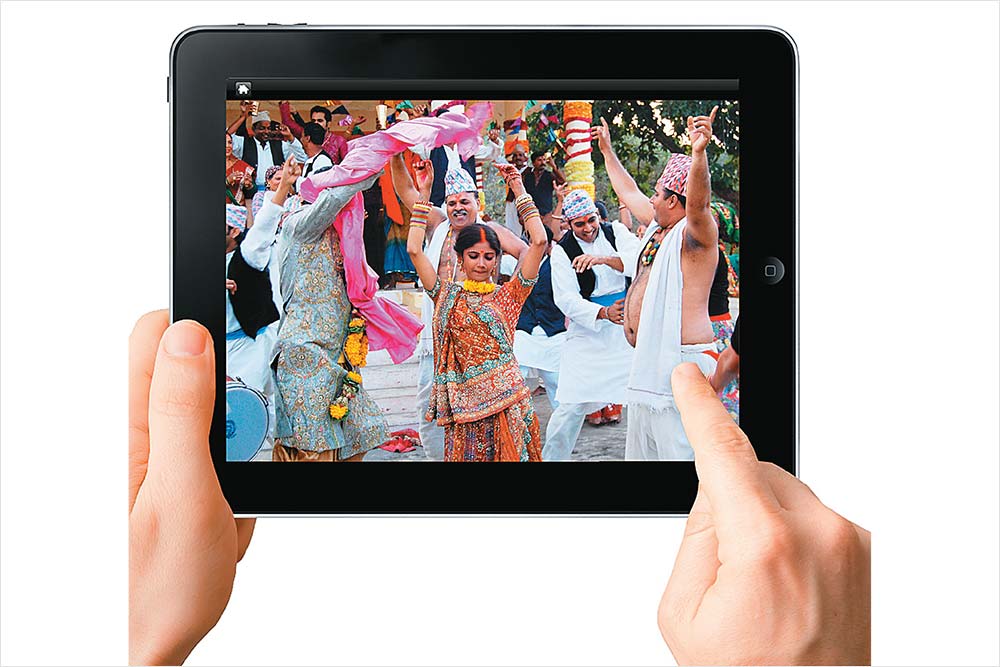It’s 10 pm and Khushi Sengupta’s just left work. The 28-year-old insurance marketing manager settles back in the cab and whips out her iPad. No, not more work — it’s time for her daily fix of soap opera and since Sengupta won’t reach home for another hour, she’ll just catch the current episode on her tablet. With the launch of Zee’s television distribution platform in March, it’s become easier for people like Sengupta — who are always on the go and can’t watch TV by appointment — to stay up to date with their choice of shows. All they need is to download the app on their smartphone, laptop or tablet — the content is delivered over the internet.
Mobile live TV isn’t a new concept — internationally, Netflix and Hulu have shown how it can become a billion-dollar revenue stream. In India, though, it’s not worked out too well, so far. The market leader Zenga offers the service for free and even Star India, which was the first broadcaster to announce distribution plans on new media, has recently made the service available at a download fee of $0.99 when it launched the app last November. Zee unveiled its version in March and so far, it’s pleased with the reception: Ditto TV — named because it gives the same experience as TV — has picked up around 250,000 users.
But it’s going to take a while before Ditto catches up with Netflix, which is a $3-billion business with over 25 million users in the Americas and Europe. Ditto, too, has a subscription-based revenue model. Its fee depends on the number of channels the user wants and range from Rs.49 a month to Rs.2,499 a year. Not surprisingly, the Rs.49-package is the most popular one. Zee is also working on making it convenient for consumers to renew their subscriptions, offering online options as well as recharge cards. But Vishal Malhotra, business head, Zee digital media, admits that just one in 10 users is a subscriber.
“The conversion of users to subscribers is a slow process,” he says. That is because the concept is new and paying for content hasn’t taken off. Also, 3G tariff rates were very high until a few weeks ago and streaming content could lead to bank-breaking bills. With most operators slashing rates by up to 70% (see: Scrambling For Growth), content streaming may become affordable.
Zee is working overtime to ensure Ditto succeeds. The company has partnered with Lenovo to embed the Ditto app in all its laptops and a Lite version has been launched on the BSNL network, where users can pick a show for just Rs.2. “Ditto Lite enables consumers to avail of our services on a per show basis. This will also encourage more consumers to sample the Ditto experience,” remarks Malhotra. Zee is also looking beyond India for its mobile TV revenue. It’s already rolled out Ditto TV in the UK, UAE, New Zealand and Australia and is heading to the US soon. These are regions with large expat Indian populations, so there’s likely to be appetite for Indian television content, especially if it can be made available on demand and on the go.
New battles
Broadcasters realise that the battle for eyeballs will now have to be played out in new media as well, but many are still hesitant. For one, the entry costs are prohibitively high. Atul Phadnis, CEO of TV guide channel What’s On India, points out that creating a multi-device app with video capability involves a one-time investment of Rs.30-60 lakh as well as regular upgrading costs of up to Rs.15-20 lakh a year. He cites What’s On India’s Android app was updated seven times in the first year of launch itself, costing Rs.10 lakh each.
Then, content consumption may still be perceived as expensive by customers. A video-based app requires a minimum 150 kbps of bandwidth. Telcos now charge 1 paise per second for 1 kbps, which means consumers will have to pay nearly Rs.1.5 for each second of streaming content.
“This makes it an expensive proposition,” says What’s On’s Phadnis. But, really, do broadcasters have a choice? Nielsen estimates that one in three Americans has streamed a TV show or a movie using a net-based video service such as Netflix, Hulu or Vudu. It may be several years before India reaches that stage, but it’s likely to happen. Mobile TV, according to Shabir Momin, CEO of Zenga TV (which accounts for close to 70% of the country’s mobile TV industry) is a Rs.60 crore industry (in terms of ad revenue). “There are 11 million mobile TV users in India, and I expect the advertising revenue to catapult to Rs.2,000 crore in the next three years,” he points out.
For advertisers, new media can be a fresh way to reach out to consumers. Zenga, for instance, makes 40% of its revenue from advertising, while the rest comes through deals with handset companies (where Zenga application is loaded on the handsets) and also from revenue sharing agreements with telecom companies, each time content is downloaded through the app. Companies such as Pepsi and Coke advertise on this platform.
Multi-device content consumption may still take time to gather momentum in India, but Ditto has big plans. Malhotra has set himself a target of getting 1 million users and 200,000 subscribers by March 2013. “Our chairman’s vision is that new media should contribute 10% to the overall revenue of the company,” he smiles. If that happens, there’ll be many broadcasters who’ll want to ditto Zee’s new media strategy.











